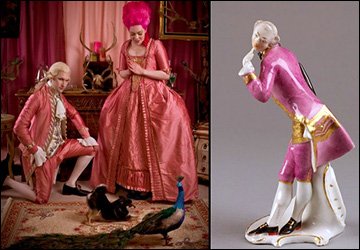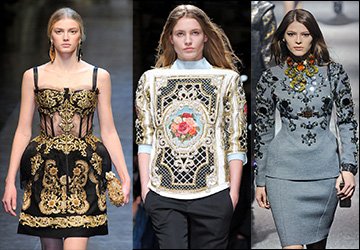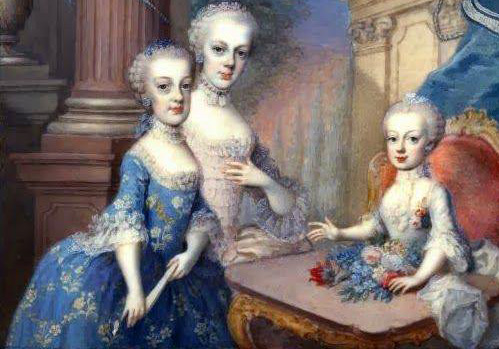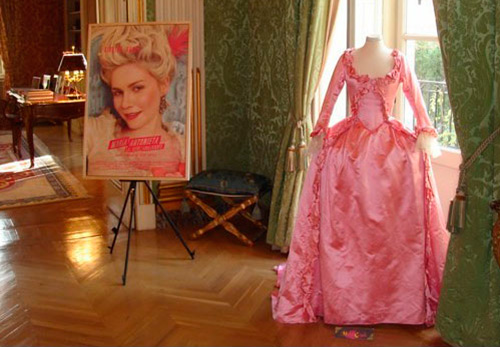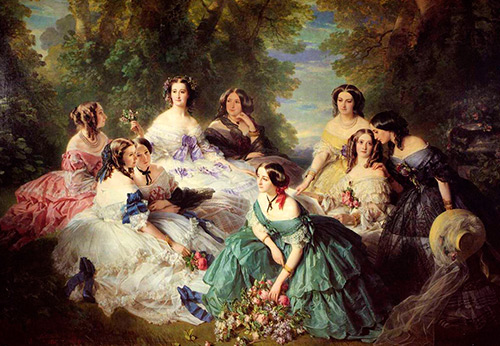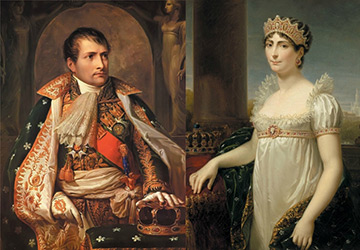Fashion history
Rococo hairstyles
If they have no bread, let them eat cakes.
Marie Antoinette, Queen of France.
Rococo Is both a continuation and an opposite of the baroque. Rococo - 18th century style. The style, in contrast to the baroque, is designed for more modest rooms and small sizes. It is not for nothing that Rococo is also called an interior style. However, no less lush, elegant and bright.
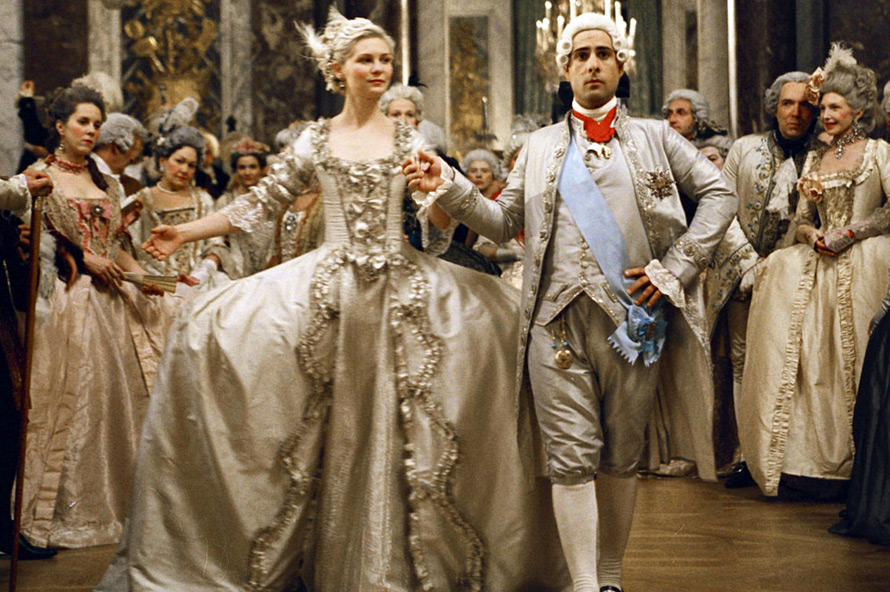
Still from the film "Marie Antoinette"
Rococo hairstyles and costumes.
Rococo is a gentle style: soft colors (pale pink, pale blue, light green), spring motives in painting, as well as motives of eternal youth and love for the nude genre. Rococo is also the style of the last years of the French monarchy, the pre-revolutionary style. The style of the times when the people lacked food and basic necessities, and excessive luxury reigned in the palaces.
Rococo hairstyles partly continued the traditions of the Baroque period. These were the hairstyles on wigs for men and high hairstyles for women. However, during the Rococo period, this is one of the main features of women's hairstyles of that time, they will reach unimaginably high sizes.
The hairstyle "ala fountain" is still in vogue. This hairstyle is very fond of Marie Antoinette. Another version of such a hairstyle appears - "fountain commodus" ("comfortable").
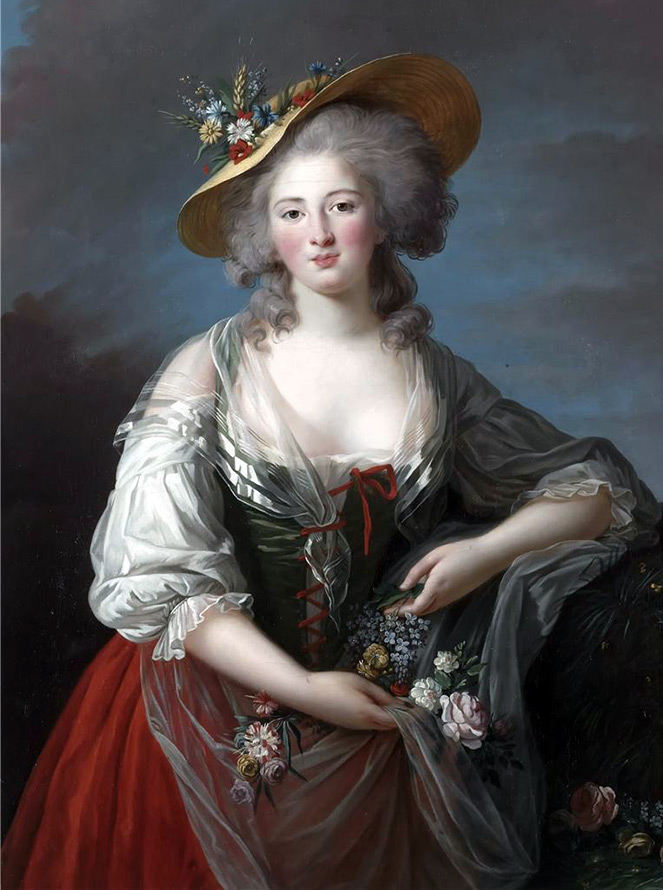
Portrait of Madame du Barry, by the artist Elisabeth Vigee-Lebrun
Hairstyle and headdress of the 18th century.
In the 20s of the 18th century, small hairstyles are in fashion. For example, the "small powdery" hairstyle is a hairstyle made of slightly curled hair, styled around the head, and with a smooth nape. Another name for this hairstyle is "Countess Kossel". On the basis of the "small powdery" hairstyle, the "polonaise" hairstyle was also created. Its authorship is attributed to the French queen of Polish origin Maria Leszczynska. The obligatory elements of the "polonaise" hairstyle were decorations - a feather and a brooch.
In the middle of the 18th century, they wore the hairstyle "tapi" - whipped curled hair, laid high above the forehead. Also in fashion were hairstyles with an egg-shaped silhouette.
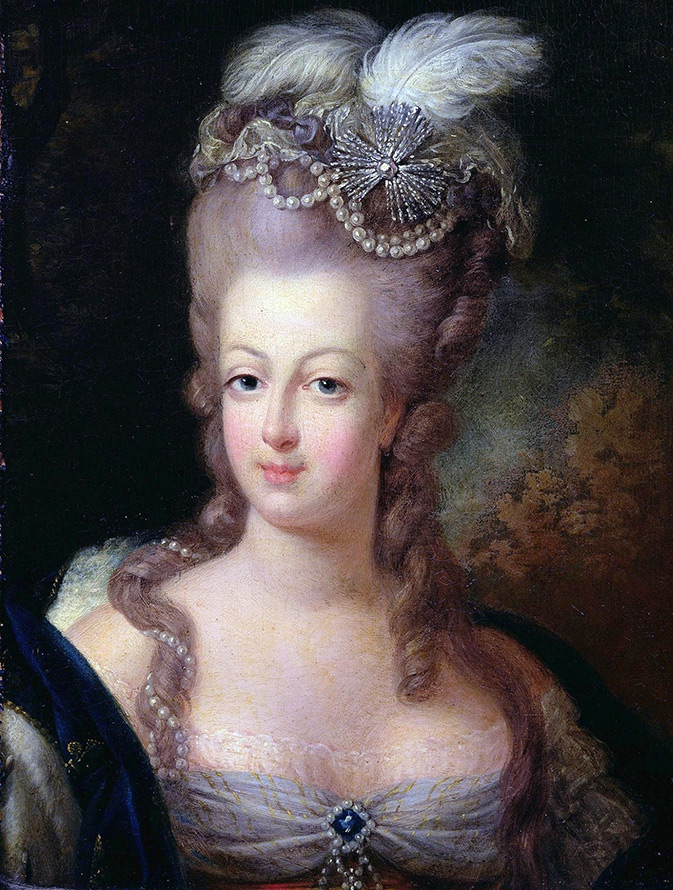
Jean Baptiste Gaultier Dagotti. Marie Antoinette.
Marie Antoinette's jeweled hairstyle. Written by kuafer (hairdresser) Leonard.
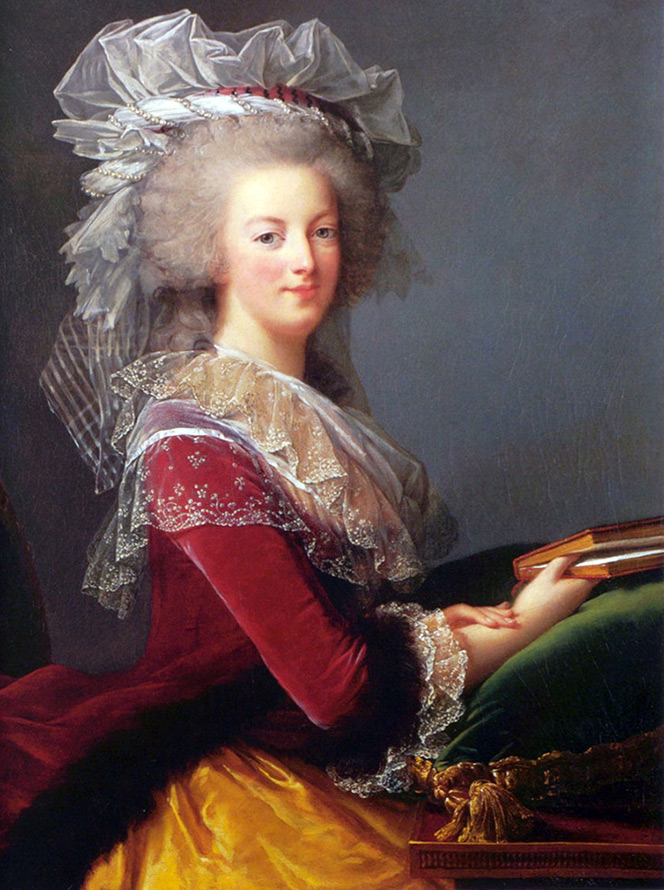
Portrait of Marie Antoinette, by the artist and her friend Elisabeth Vigee-Lebrun, 1785.
And in the 60s and 70s of the 18th century, the fashion for high hairstyles came. Such hairstyles are made using artificial strands, as well as whole decorative elements - figures of people, animals, fruits. For example, a frigate hairstyle - with a boat on its head. Such hairstyles were built for a long time and were worn for more than one month. Showered with powder, various aromatic substances. And in such hairstyles, various insects could well start. One of the ladies of the court even had a mouse on her head. Hairstyles itched. So that ladies could scratch their heads, they had special long sticks. And since with such huge hairstyles it was problematic to get into a carriage with a roof, the ladies traveled in carts. But soon the famous French hairdresser of that period, the personal hairdresser of Marie Antoinette, Leonard came up with a mechanism with which hairstyles could be folded.
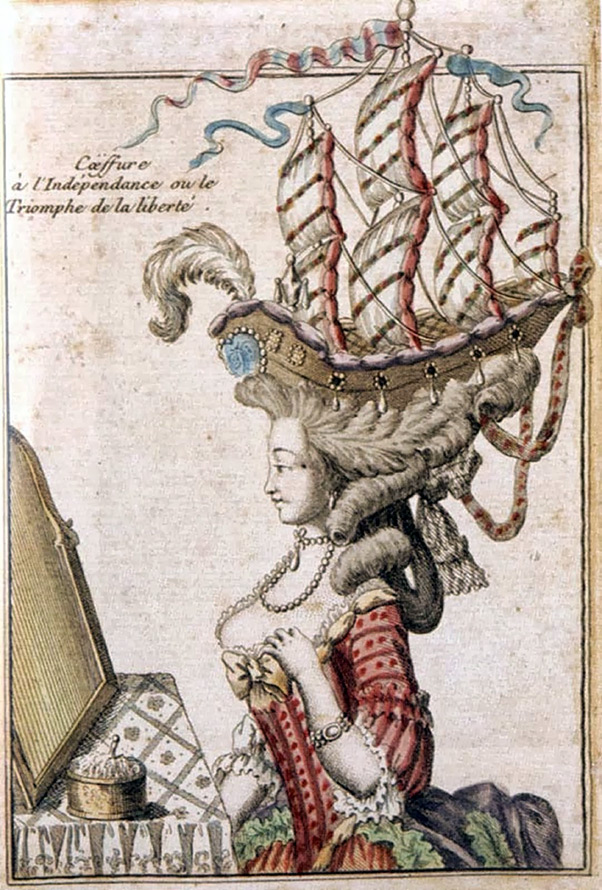
Frigate hairstyle
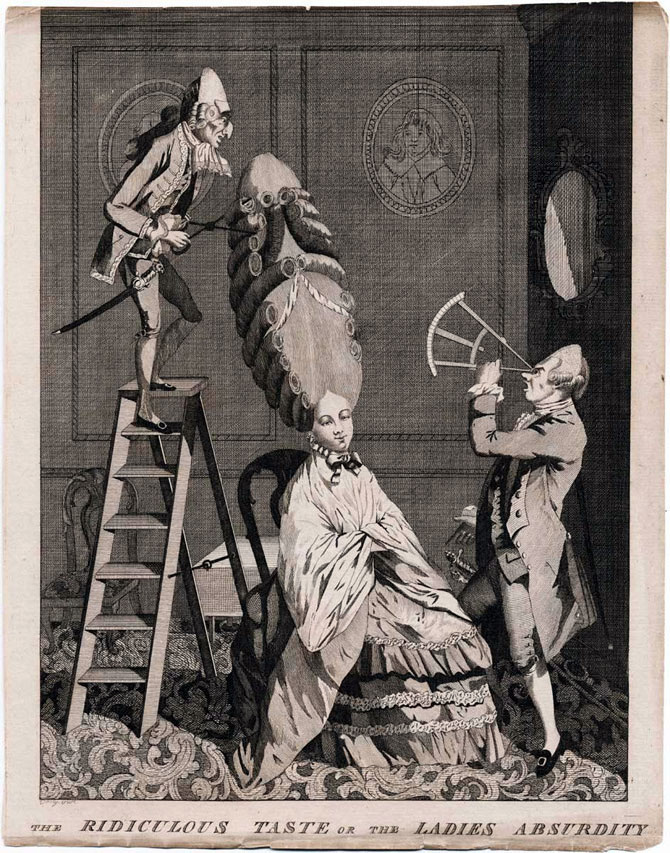
Caricature on high hairstyles
In addition to the "frigate" hairstyle, the hairstyle "a la Madame du Barry" was also popular, named after the favorite of King Louis XV of France. The hairstyle consisted of curled and powdered hair arranged on a high frame.
Men's hairstyles were done on wigs. However, unlike the 17th century wigs, the 18th century wigs were much smaller.
So, a wig with a fine perm "a la muton" ("under the ram") was widespread. They also wore the “ke” (“tail”) hairstyle - the curled hair was combed back and tied at the back of the head with a black ribbon.Initially, this hairstyle was made from their own hair, but then they will begin to wear it on wigs.
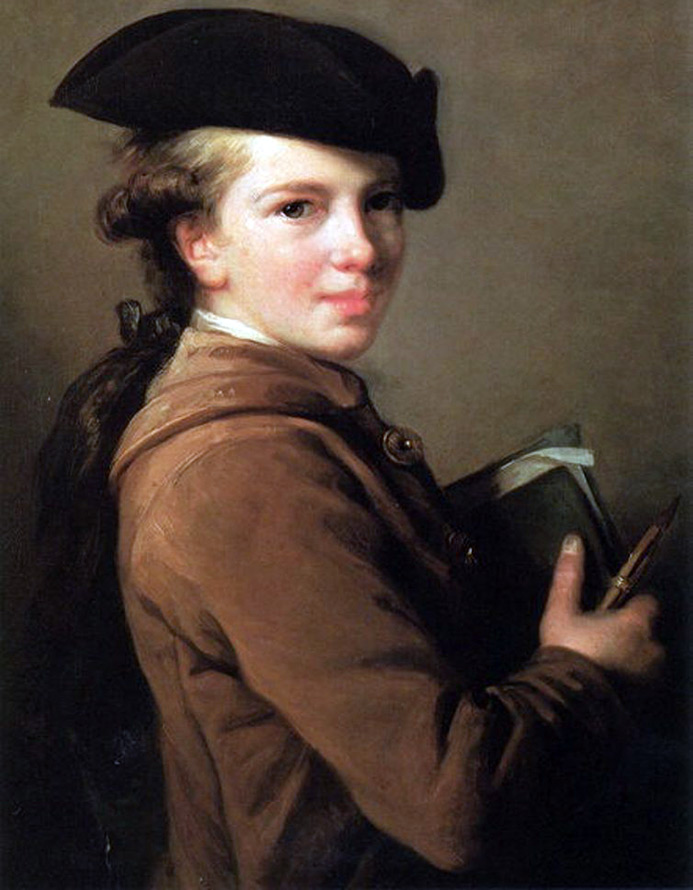
Elisabeth Vigee-Lebrun. Portrait of Etienne Vigee (the artist's brother), 1773.
Hairstyle with a ponytail.
Another hairstyle "a la burs" - the tail of the hair was tucked into a bag or case, which was made of black velvet and had a quadrangular shape, and was also decorated with bows, buckles and ruffles. At the same time, strands of hair were left near the temples, which descended just below the ear. These strands were called "pigeon wings".
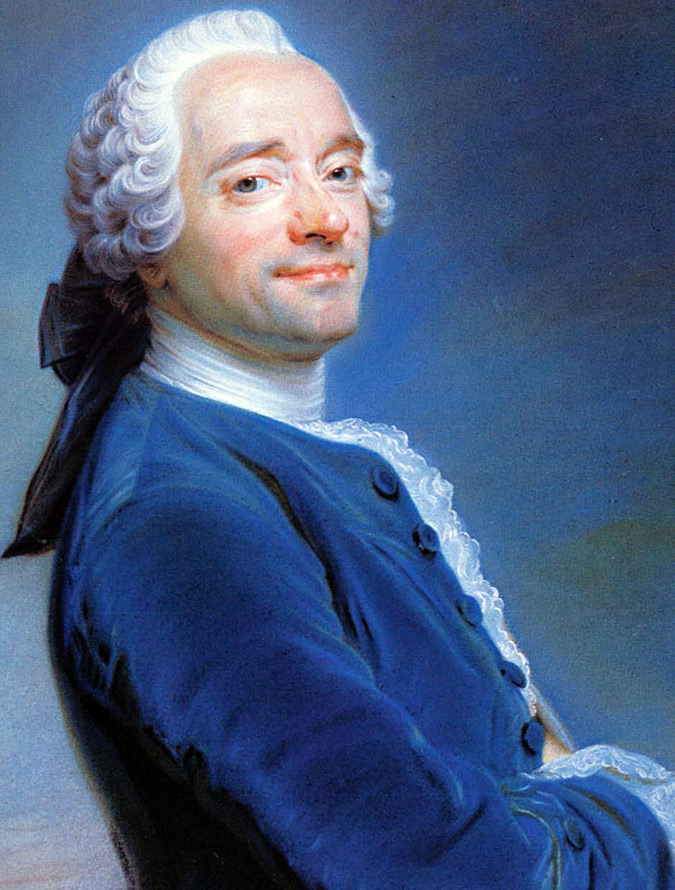
Maurice Quentin de Latour. Self-portrait.
Hairstyle "a la burs".
In the 30s of the 18th century, the hairstyle "a la katogan" ("knot") was very popular. The hairstyle was made from curled and powdered hair. At the temples, the hair curled in bouclés or curls-shells, and a long strand was left on the back of the head, which was gathered into a thick knot, somewhat resembling a ponytail.
They also wore a hairstyle "a la budera" ("rat's tail"). The hair above the forehead was whipped into a high spinner, curled in bouclés at the temples, and tightly wrapped around the back of the head with leather straps and a moire ribbon.
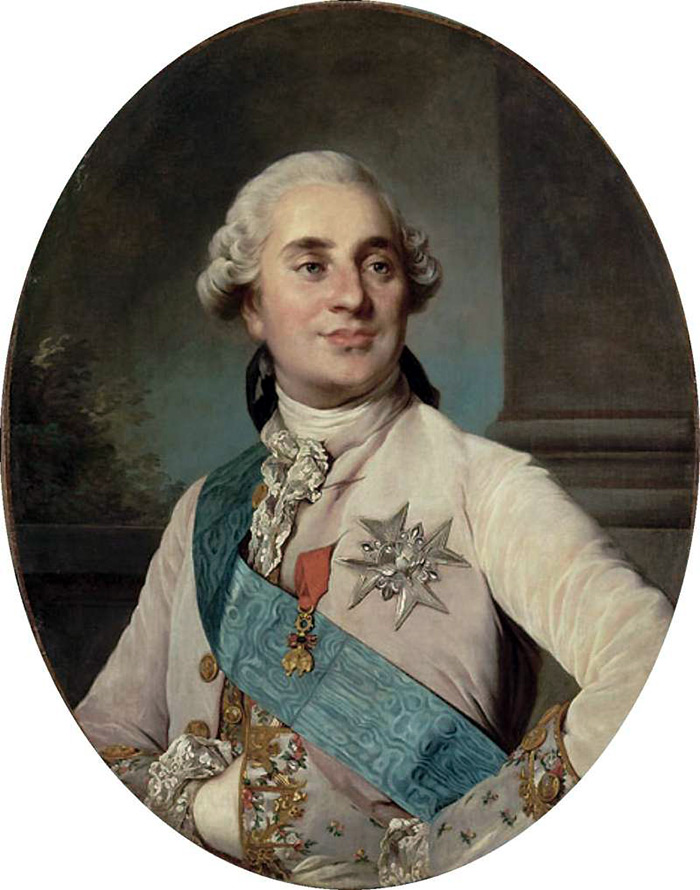
Joseph Duplessis. Portrait of Louis XVI, 1775.
Wig and "dove wings" (at the temples) on the hair.
There were also hairstyles with braids that were tied with a bow. Such braids were not long and they were called "pig tails".
From the second half of the 18th century, England began to dictate more and more fashion for men's hairstyles. Plus, interest in Antiquity begins to appear (excavations of Pompeii are underway), and, accordingly, in antique hairstyles.
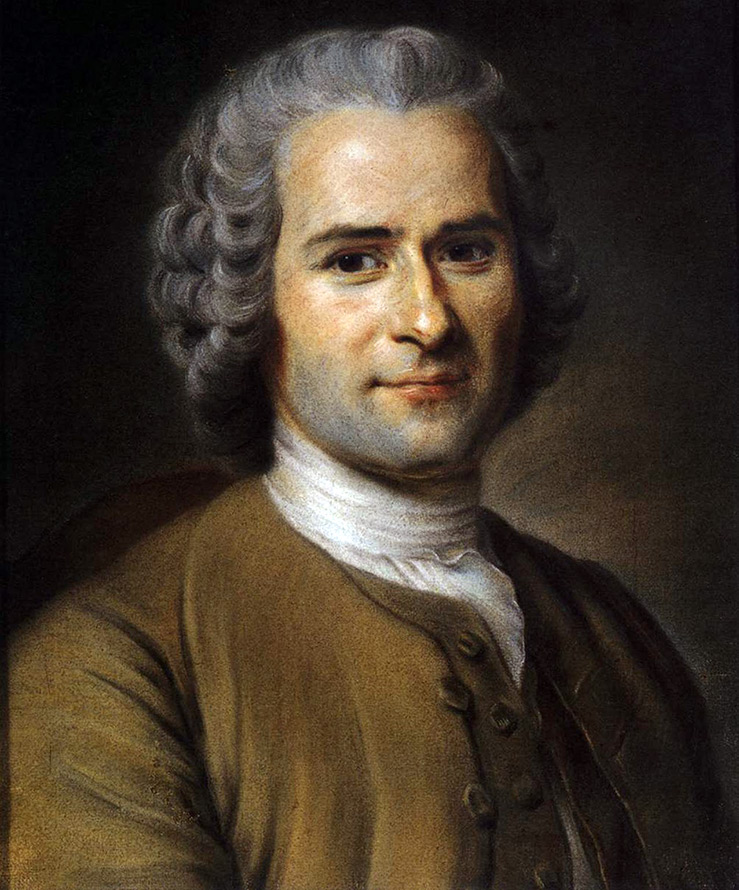
Maurice Quentin de Latour. Portrait of Rousseau, 1753.
Men's hairstyle. XVIII century.
An interesting fact: it was in the 18th century that the Academy of Hairdressing was opened in Paris. Hairdressers were then called kuafers. The most famous cuafers were Legros, the hairdresser of Louis XV, who was also the creator of the Academy, and Leonard, the hairdresser of Marie Antoinette.
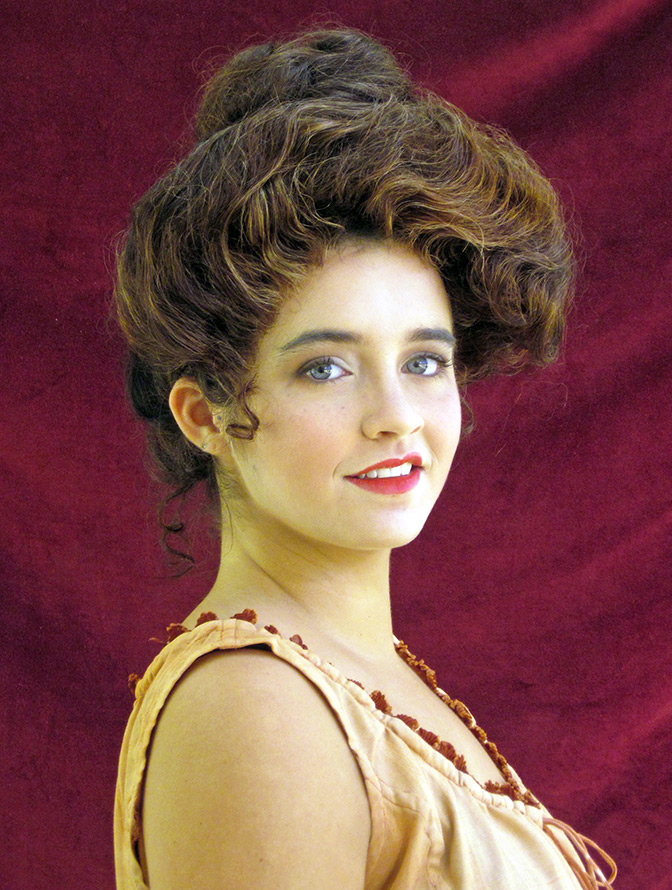
Photo of modern Rococo hairstyles
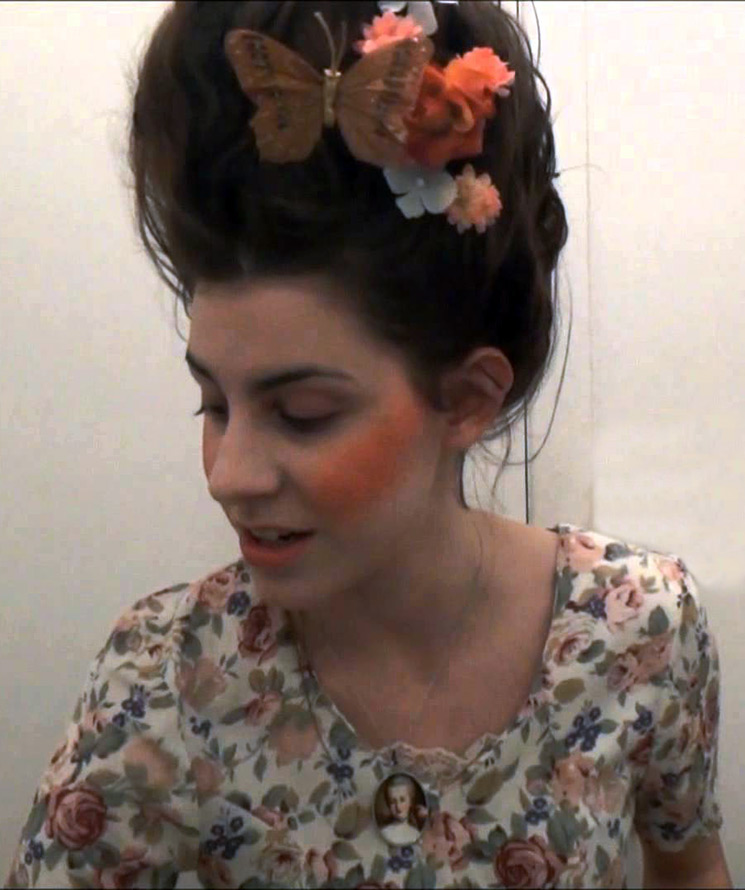
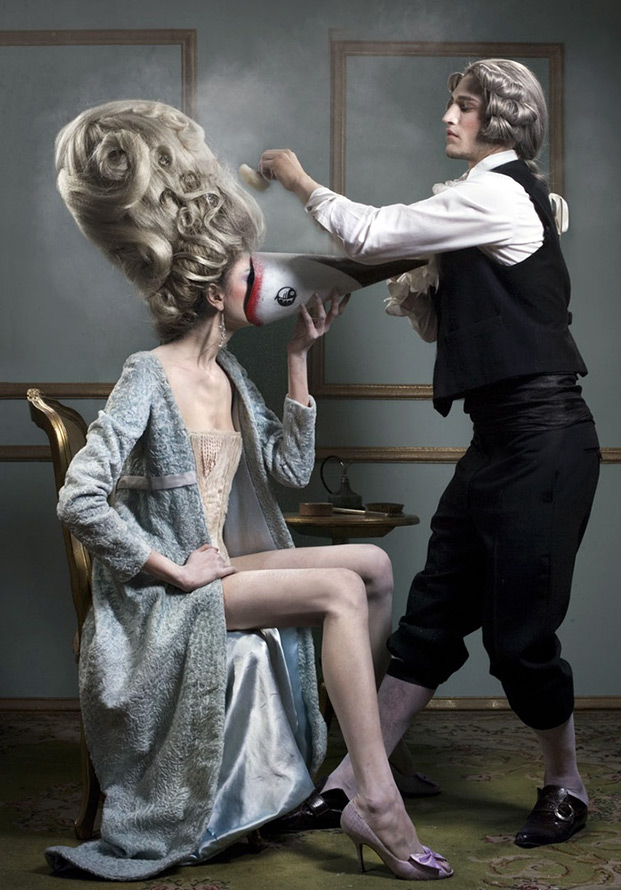
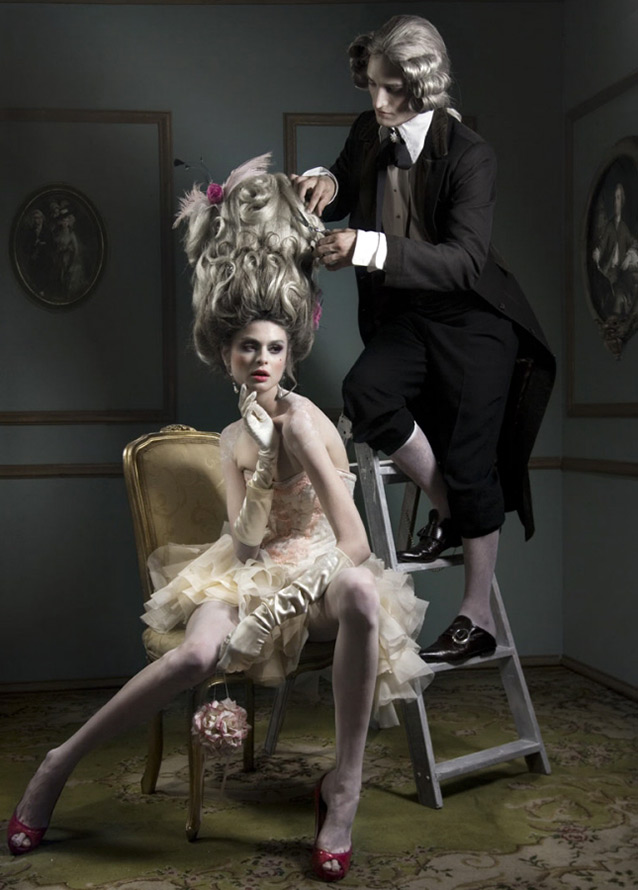
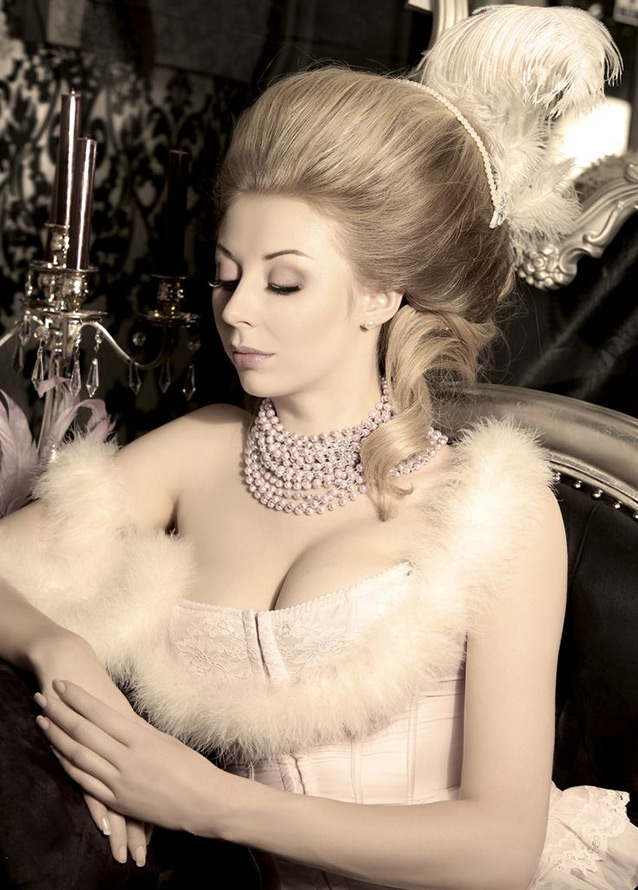
Veronica D.
Comments and Reviews
Add a comment
Rating news
Shades of clothing that make women look younger
What shades of hair make women younger: rules and photos
Funny wedding dresses - photos and ideas
12 most expensive down jackets for the winter
How to look 25 at 40: tips from supermodels
Beautiful schoolgirls
Anti-aging haircuts and hairstyles for women
Fashionable skirts for autumn and winter
Fashionable women's trousers for the cold season
Fashionable and stylish sandals for summer 2024
Spring-summer 2024
 Fashionable dresses and tops with thin spaghetti straps
Fashionable dresses and tops with thin spaghetti straps
 Bandana tops: how to wear stylishly and beautifully
Bandana tops: how to wear stylishly and beautifully
 How to put together the perfect men's wardrobe for the summer
How to put together the perfect men's wardrobe for the summer
 Fashionable shorts for spring-summer 2024
Fashionable shorts for spring-summer 2024
 Fashionable skirts for spring-summer 2024: a guide to online shopping
Fashionable skirts for spring-summer 2024: a guide to online shopping
 The most fashionable dresses spring-summer 2024: styles and colors
The most fashionable dresses spring-summer 2024: styles and colors
 Fashionable total look 2024: image ideas and trends
Fashionable total look 2024: image ideas and trends
